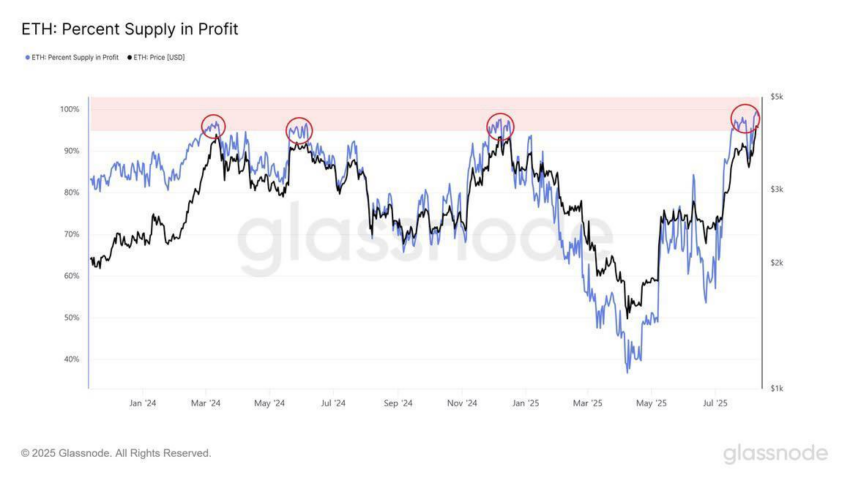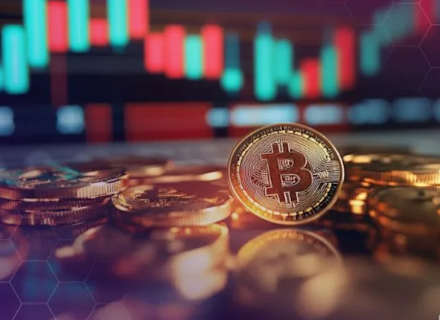98% of Ethereum Supply Hits Profit: Warning Signal Flashes
Over 98% of the circulating Ethereum supply is now in a profitable state, reaching a two-year high and signaling a heightened risk of a price correction as investors may look to cash in on their gains. Not-Seen Profit Level in Two Years According to on-chain data platform Glassnode, its “Percent Supply in Profit” metric for … <a href="https://beincrypto.com/98-of-ethereum-supply-hits-profit-warning-signal-flashes/">Continued</a>
Over 98% of the circulating Ethereum supply is now in a profitable state, reaching a two-year high and signaling a heightened risk of a price correction as investors may look to cash in on their gains.
Not-Seen Profit Level in Two Years
According to on-chain data platform Glassnode, its “Percent Supply in Profit” metric for ETH surpassed 98% on Thursday, a level not seen in the last two years. This key market sentiment indicator measures the percentage of coins trading above their previous blockchain transaction prices. Analysts classify coins as ‘in profit’ when current prices exceed last transaction prices, and ‘in loss’ when below.
 Source:
Glassnode
Source:
Glassnode
Historically, readings above 95% suggest the market becomes overheated and approaches a local top. Most investors hold unrealized gains, creating strong incentives to sell and realize profits. Conversely, readings below 50% often indicate market bottoms, where widespread losses reduce selling pressure and create buying opportunities.
Statistics from the past two years underscore the potential for a pullback. The metric has crossed the 95% threshold on four separate occasions. Of the three previous instances, two triggered price corrections exceeding 10%, with the most recent pullback slashing prices by over 40%.
Watch for Indicator Drops if ETH Corrects
The current ETH rally was significantly fueled by concentrated buying from Digital Asset Treasury (DAT) companies that began in May. A substantial correction could occur if these major holders decide to take profits en masse, possibly triggered by shifting macro-economic conditions.
Analysts suggest that the “Percent Supply in Profit” indicator should be watched closely if a downturn materializes. A sharp drop in the metric coinciding with a steep price decline has historically served as a reliable signal that the market has formed a short-term bottom.
Disclaimer: The content of this article solely reflects the author's opinion and does not represent the platform in any capacity. This article is not intended to serve as a reference for making investment decisions.
You may also like
Mars Morning News | SEC Expected to Issue "Innovation Exemptions" for the Crypto Industry in "About a Month"
The SEC is expected to issue an innovation exemption for the crypto industry. The UK "Digital Assets and Other Property Act" has come into effect. BlackRock's CEO revealed that sovereign wealth funds are buying bitcoin. Bank of America recommends clients allocate to crypto assets. Bitcoin selling pressure is nearing its end. Summary generated by Mars AI. The accuracy and completeness of this summary are still being improved as the Mars AI model continues to iterate.

a16z: Inefficient governance and dormant tokens pose a more severe quantum threat to BTC.
Deep Reflection: I Wasted Eight Years in the Crypto Industry
In recent days, an article titled "I Wasted Eight Years in the Crypto Industry" has garnered over a million views and widespread resonance on Twitter, directly addressing the gambling nature and nihilistic tendencies of cryptocurrencies. ChainCatcher now translates this article for further discussion and exchange.

